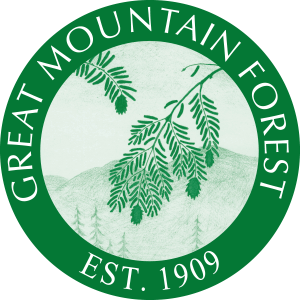Warm and Dry
By Russell Russ
The year of 2019 was tied with 1932 as Norfolk’s 16th warmest and also came in as Norfolk’s 15th least snowy year. November was considerably below normal for temperature. December, while being a little above normal for temperature, was well above normal for precipitation and above normal for snowfall. One would think January would have been the month where winter really set in, but that was not the case at all. January was over seven degrees above normal for temperatures, ranking it as Norfolk’s 8th warmest January. It was also the 10th driest and ranked as Norfolk’s 5th least for January snowfall. The question on everyone’s mind is what is up with the lack of winter weather this winter?
January’s average mean temperature of 27.9 degrees was 7.1 degrees above normal. Norfolk’s warmest January on record was in 2002 with an average temperature of 31.7 degrees and the coldest was in 1982 with 11.7 degrees. January’s low temperature of 5 degrees was observed on January 18. The month’s high temperature of 62 degrees was observed on January 11. There were two days this month with record breaking high temperatures. The high of 62 degrees on January 11 surpassed 2014’s 56 and the January 12 high of 61 surpassed 2018’s 58. Over the last eighty-nine Januarys, this station has recorded only six days with January daily high temperatures of 60 or above (62 in 2020, 2007 and 1950, 61 in 2020, 60 twice in 1932). Stating the obvious, in Norfolk, getting temperatures of 60 degrees or above in January does not happen very often.
January’s total precipitation of 1.87 inches was 2.15 inches below normal. The wettest January occurred in 1979 with a total of 11.77 inches and the driest was in 1970 with just 0.74 inch. The monthly snowfall total of just 5.8 inches was 15.0 inches below normal. The snowiest January occurred in 1987 with 50.5 inches, coming in at second snowiest was January 2011 with 50.0 inches. The least snowy was in 1980 with just 2.6 inches.
The 2019-2020 winter season snowfall total through January was 31.8 inches, 13.4 inches below normal. Snow lovers seem to be complaining at an above normal amount this winter. With below normal snowfall they have a point, but in fact, the snowfall totals for the last nine winters through the month of January have also been below normal. We need to go back to the winter of 2010-2011 to find snowfall totals above normal through January. Of course, the 50.0 inches of snow recorded in January 2011 certainly helped the snow cause that season.
A look at February’s weather through mid-month shows that snowfall and cold temperatures were still under-performing this winter. There were no record high temperatures, but temperatures for the month were running about 7 degrees above normal. There just have not been many real cold, typical February, low temperatures so far. While the lack of this winter’s first monster snowstorm still looms over Norfolk, February’s snowfall and precipitation totals are running just a little below normal through mid-month. Most of Connecticut is recording low snowfall totals this winter, but Norfolk’s higher elevation has helped its case for snow. Winter’s cold and snow have affected many residents around the country and in upper New York State and northern New England. So far this winter, the weather patterns have pushed winter to our north. Local snow lovers should keep the faith, late February and March can be quite cold and snowy in Norfolk.


